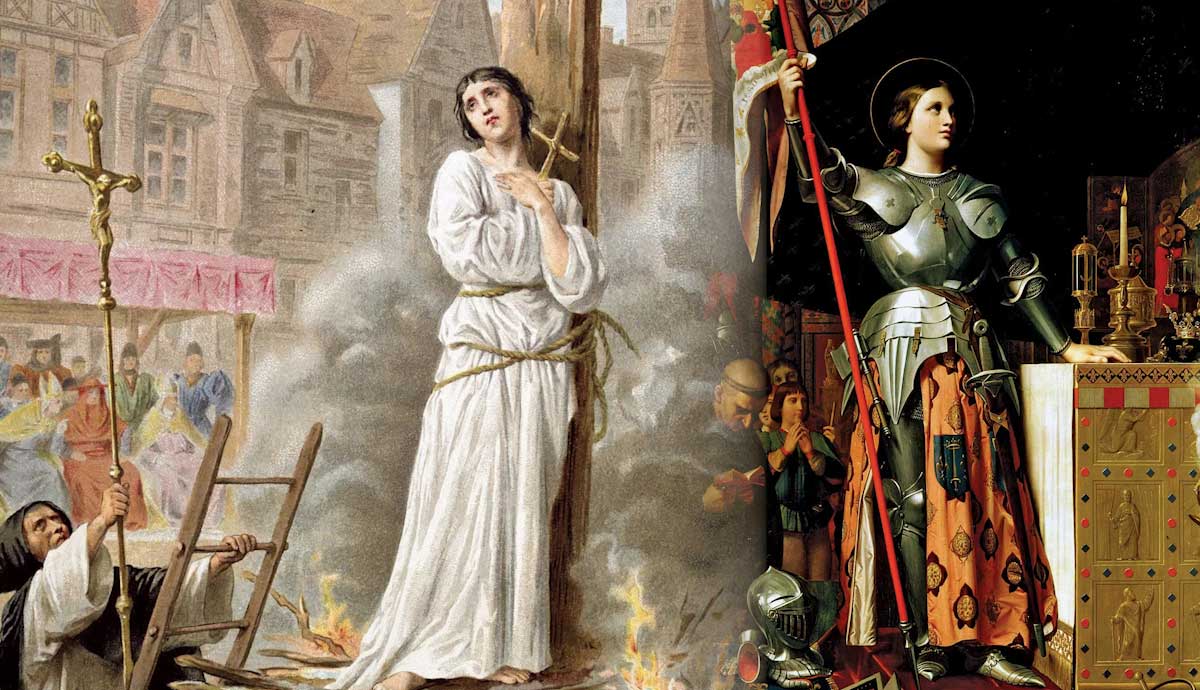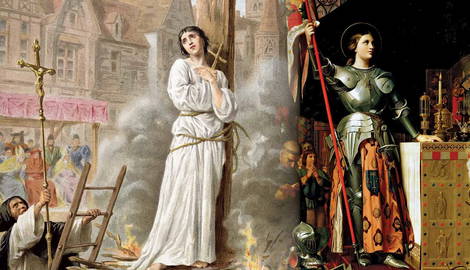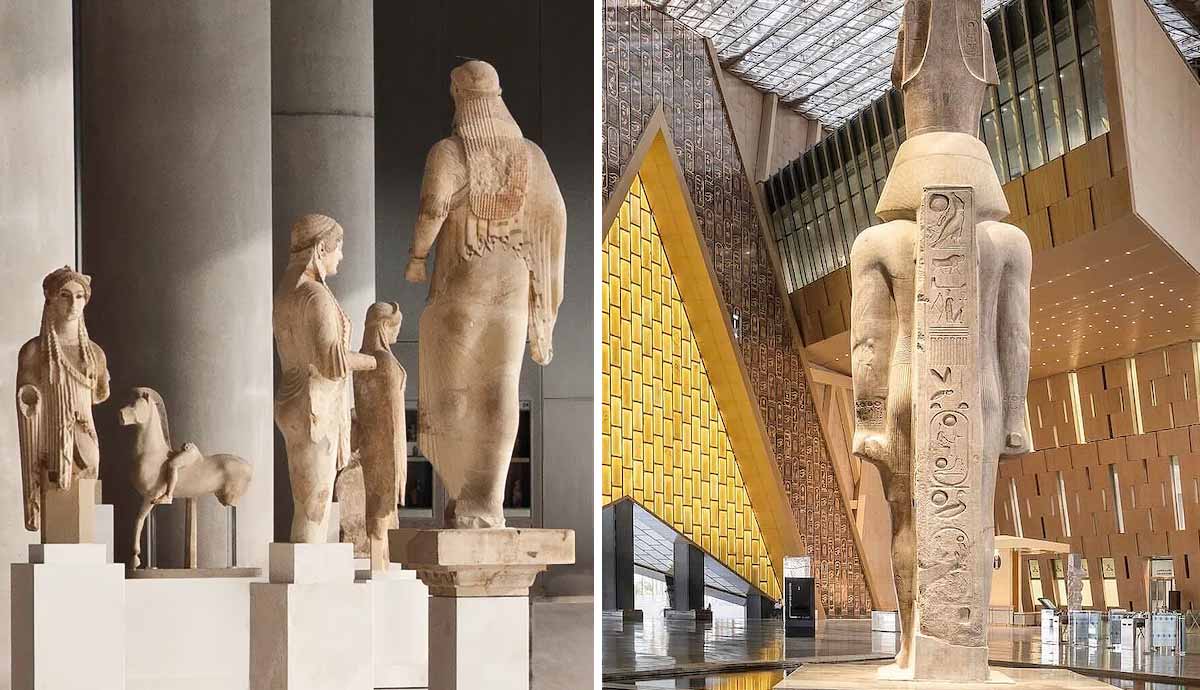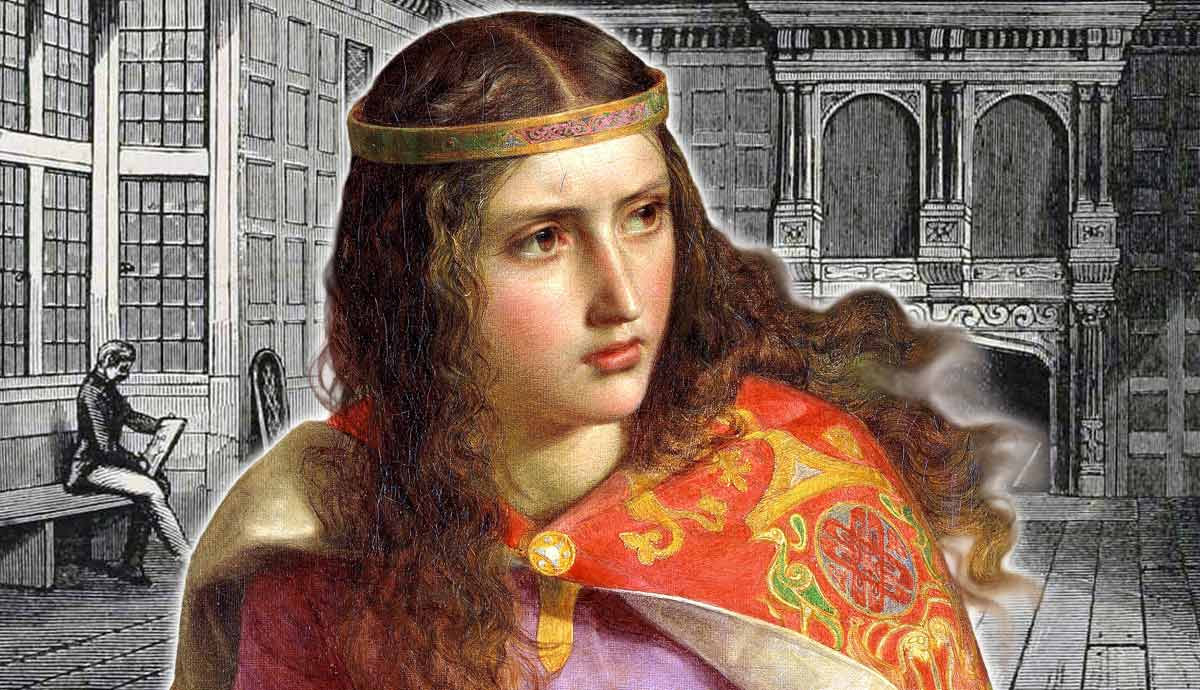
At the end of the 11th century, pilgrim Crusaders found themselves in an impossible situation besieged within the walls of Antioch. They were outnumbered four to one. They had no food and turned to cannibalism. All was lost.
But then a peasant priest named Peter Bartholomew discovered the Spear of Destiny–the lance that pierced the side of Christ. According to legend, whoever wields the relic could never be defeated in battle. Then, the Crusaders rode out and met their enemy on the open fields around Antioch, believing that the lance would shield them from defeat. The result was a complete and total victory for the Crusaders and an ignominious rout for their enemies.
This story proves the effectiveness of religious fervor during the middle ages. Morale, boosted by a belief in divine intervention, could be a superweapon.
It is a dangerous game, however, and those claiming to have had celestial visitations, conversations with God, and instructions from Heaven were just as likely to be burnt at the stake for witchcraft as they were to be lauded as prophets. It is in this context that the story of Joan of Arc exists.
Background to Joan of Arc’s Mission

Born in 1412 into a peasant family, Joan of Arc was instilled with a great love for Catholicism from a very early age. She was born into the Hundred Years’ War, a brutal conflict between the English and French Royal houses over the throne of France. Three years after her birth, the war, which had been raging on and off since 1337, had flared up into a particularly brutal period characterized by serious English gains. Along with the bloody battles came pillaging and raping, burning villages, and mass displacement. Joan’s village of Domrémy came under Anglo-Burgundian rule when she was very young, and many villagers left their homes in fear.
In 1420, the Treaty of Troyes disinherited the Dauphin (heir to the throne of France), Charles VII, and stated that upon the death of the king, the throne would pass to Henry V, the king of England.

At the age of 13, Joan began hearing voices that she attributed to God. In her vision, she saw Saint Michael, a symbol of France’s protection, surrounded by a host of angels. She also saw the spirits of saints who had been martyred. She was convinced that she had been ordered by a heavenly edict to rid France of her enemies and install Charles VII on the throne. Her belief also led her to take a vow of chastity. Despite this, at the age of 16, her father tried to arrange a marriage for her. She challenged this legally, and the local court decided in her favor, claiming that she could not be forced to give up her vow. Her visions also tied in with two seers who had previously prophesied that an armed French maiden would save France.
Joan was gripped by the desire to inform the French authorities of her mission. In 1428, she convinced her uncle to travel with her to speak with the garrison commander at a nearby town and plead for an escort to Chinon to gain the support of the House of Armagnac, a powerful noble house and leader of the Armagnac Party, which supported Charles VII. She was refused, and she returned home. Shortly after, Burgundian forces allied with the English pillaged Domrémy, burning houses and forcing the inhabitants to flee. Joan once again pleaded with the garrison commander but was refused again. Her attempts, however, had not gone unnoticed. Believing her to be able to cure his ailments, the Duke of Lorraine summoned her to Nancy, where he resided.

All this happened in the context of renewed fighting. Charles VII had refused to abide by the Treaty of Troyes and resisted English occupation. His aim was to travel to Reims, where he could be crowned King of France. English military successes were overwhelming, and in 1428, the city of Orléans came under siege. Orléans was the last big obstacle to complete English domination and the conquest of Charles’ remaining territories. For the Armagnac French, defeat seemed inevitable. Nevertheless, the city refused to surrender and prepared for a long siege. Joan’s third attempt at speaking to the garrison commander proved fruitful, and it was agreed that she could seek an audience with the Dauphin.
The Beginnings of Joan of Arc as a Heroine

Joan of Arc met with Charles in March 1429, and the Dauphin, impressed by her devotion, sent Joan to Orléans to inspire the garrison and to test whether she was indeed sent by God. Fortunately, the city was not completely cut off, and Joan of Arc arrived at the city safely. She was well received, and her effect on the troops was so significant that the tide of battle was turned. She stayed with the troops wherever the fighting was, supporting the beleaguered French soldiers. She even gave military advice, which was heeded and proved successful. During a failed attack on English troops, her presence rallied the French, who regrouped and beat back the English.
Joan’s presence was the most significant factor in the siege of Orléans, which directly led to a complete victory for the French. Her reputation as a figure sent by God to save the French was solidified, and her fame spread throughout the realm. The French loved her, and the English despised her, claiming that a young peasant girl’s ability to defeat the English army was the work of the Devil and she was possessed by evil.
Clearing the Loire & Marching to Reims

After the victory at Orléans, the French needed to secure the region by recapturing towns near the Loire River. Accompanying the Dauphin and the Duke of Alençon, the French managed to drive the English out of Jargeau, Meung-sur-Loire, and Beaugency. Joan took part in some of the action, and her helm was split by a stone while she was attempting to scale the walls of Jargeau.
The main English army arrived too late to relieve the towns and attempted to fall back toward Paris. Happy with their successes, the French were prepared to let the English go, but Joan of Arc urged them to pursue their enemies. On June 18, 1429, the French won a lopsided victory against a numerically superior English army and captured all but one of the senior English commanders.
The Battle of Patay was a complete disaster for the English. Only the French vanguard had taken part in the battle, and Joan of Arc remained with the main body of the army. Nevertheless, she is still given credit for the victory as it was she who inspired the French.
With the exception of Troyes, which took a few days of convincing and the promise of an artillery barrage, the march to Reims went virtually unopposed. On July 16, Reims opened its gates, and Charles VII was consecrated as the French King. Upon this event, Joan of Arc declared that God’s will had been done.
Joan of Arc Loses Favor with the Royal Court

Almost immediately after Charles VII was crowned, Joan of Arc fell prey to unfair politicking. The French army marched on Paris and confronted an English army in the field. Joan rode out to try and goad the English into attacking, but they refused to give a fight, instead retreating behind the walls of Paris.
The French laid siege to the city, but after suffering heavy casualties, Charles VII called off the attack. Joan of Arc and the Duke of Alençon protested this decision and made plans for a renewed assault, but Charles VII had the bridge needed to assault the city dismantled, and the French retreated in defeat.
Joan of Arc was blamed for the misfortune, and scholars argued that she was not inspired by the divine. The royal court sidelined her, and she was barred from working with the Duke of Alençon.
Nevertheless, she was given a title and continued to war against the Burgundians. There were more failures than successes on the battlefield, and Joan of Arc was eventually captured and turned over to the English, who put her on trial in Rouen for heresy and for wearing men’s clothes.
Trial and Execution

She was put on trial by French nobles allied to the English cause, and the result was a foregone conclusion. The English Crown understood that a guilty verdict would invalidate Charles VII’s claim on the French throne, as it was guided by a heretic, so they paid for the whole trial. The trial was irregular and did not follow the correct procedures. Nevertheless, Joan of Arc conducted herself with dignity throughout the proceedings. Instead of being executed immediately, Joan of Arc was imprisoned in terrible conditions. The verdict was that she was a repentant heretic, which garnered her a stay of execution.
Shortly thereafter, she claimed that her repentance had been a mistake, and assessors voted unanimously to rescind her designation as repentant. It was decided she would be released to a secular power, in this case, the English. Her fate was sealed, and she was to be burned at the stake. In a small token of compassion, when she was being tied to the stake, she asked to hold a cross, and an English soldier gave her a cross he had made out of two sticks.
On May 30, 1431, at the age of 19, Joan of Arc was burned to death.
Joan of Arc Beyond Death

When she was alive, Joan of Arc was compared to revered Biblical women. She was seen as an instrument of divine intervention. She became arguably even more powerful after her death, becoming an icon that inspired the French to final victory over the English in the Hundred Years’ War. She was stubborn, devout, courageous, and driven to defend her home. In many aspects, she has come to be a perfect representation of the nation of France. Legend turned her into a national heroine and helped create a national identity that persists to this day. In 1456, she was declared a martyr. In 1909, she was beatified, and in 1920, she was canonized by the pope. Her fame never diminished, and she is still a powerful force behind the character of the French who hold her in such high regard.

Not only is she a national symbol for France, but she is also a symbol of Catholic devotion and the power of God. She was used as a symbol in the suffragette movement, and her face appears on posters urging political and social will. She challenged powerful patriarchies and fulfilled the role of a military leader while still representing the feminine. Several movies have been made about her life, and literature on her legacy continues to be written.
Joan of Arc is more than a French heroine. She is an international symbol of the resolute nature of humankind and its ability to surmount overwhelming odds.
These are no mean feats for a simple peasant girl born into obscurity in medieval Europe. What Joan of Arc accomplished in this context and in her brief 19 years on Earth was an uncommon achievement that altered the course of history and inspired future generations right up to the present day.










